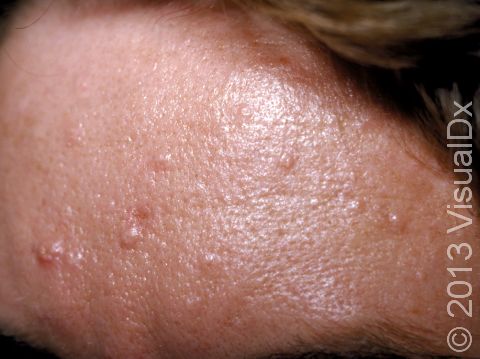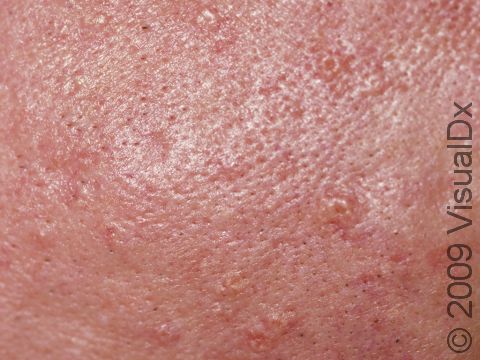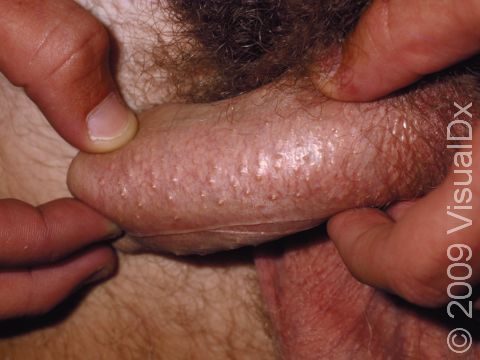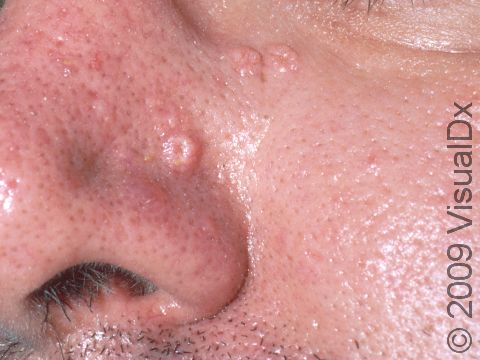Sebaceous Hyperplasia
Sebaceous hyperplasia is a common harmless enlargement of the skin oil glands.
Who's At Risk?
It usually occurs in middle-aged and older adults and is seen in about 1% of the US population.
About 10–16% of people on long-term cyclosporin A for organ transplants also develop sebaceous hyperplasia. There are a few families where multiple lesions begin to occur during puberty.
Signs & Symptoms
Lesions may be single or multiple. They are seen in areas where many oil glands are found – the face (nose, cheeks, and forehead), chest, upper arms, mouth lining, vulvar area, and around the nipples.
They are small (2–9 mm), painless, whitish-yellow-to-pink or skin-colored bumps, often with a central depression or dimple.
Self-Care Guidelines
No treatment is required. They will not go away on their own.
Treatments
If there is doubt about the diagnosis, a biopsy may be done.
Many types of treatment can remove the lesions, with a small risk of leaving scars:
- Burning (cautery)
- Freezing (cryosurgery)
- Applying topical chemicals
- Applying a drug activated by light (photodynamic therapy)
- Laser treatment
- Cutting out the lesions (excision)
Visit Urgency
See your doctor:
- If the lesions are irritated (by shaving, glasses, or clothing) or if they are cosmetically bothersome.
- If you have many lesions (over 10) or if they are growing or bleeding.
Trusted Links
References
Bolognia, Jean L., ed. Dermatology, pp.546-547, 1743. New York: Mosby, 2003.
Freedberg, Irwin M., ed. Fitzpatrick’s Dermatology in General Medicine. 6th ed. pp.2541. New York: McGraw-Hill, 2003.
Last modified on October 5th, 2022 at 7:57 pm

Not sure what to look for?
Try our new Rash and Skin Condition Finder



